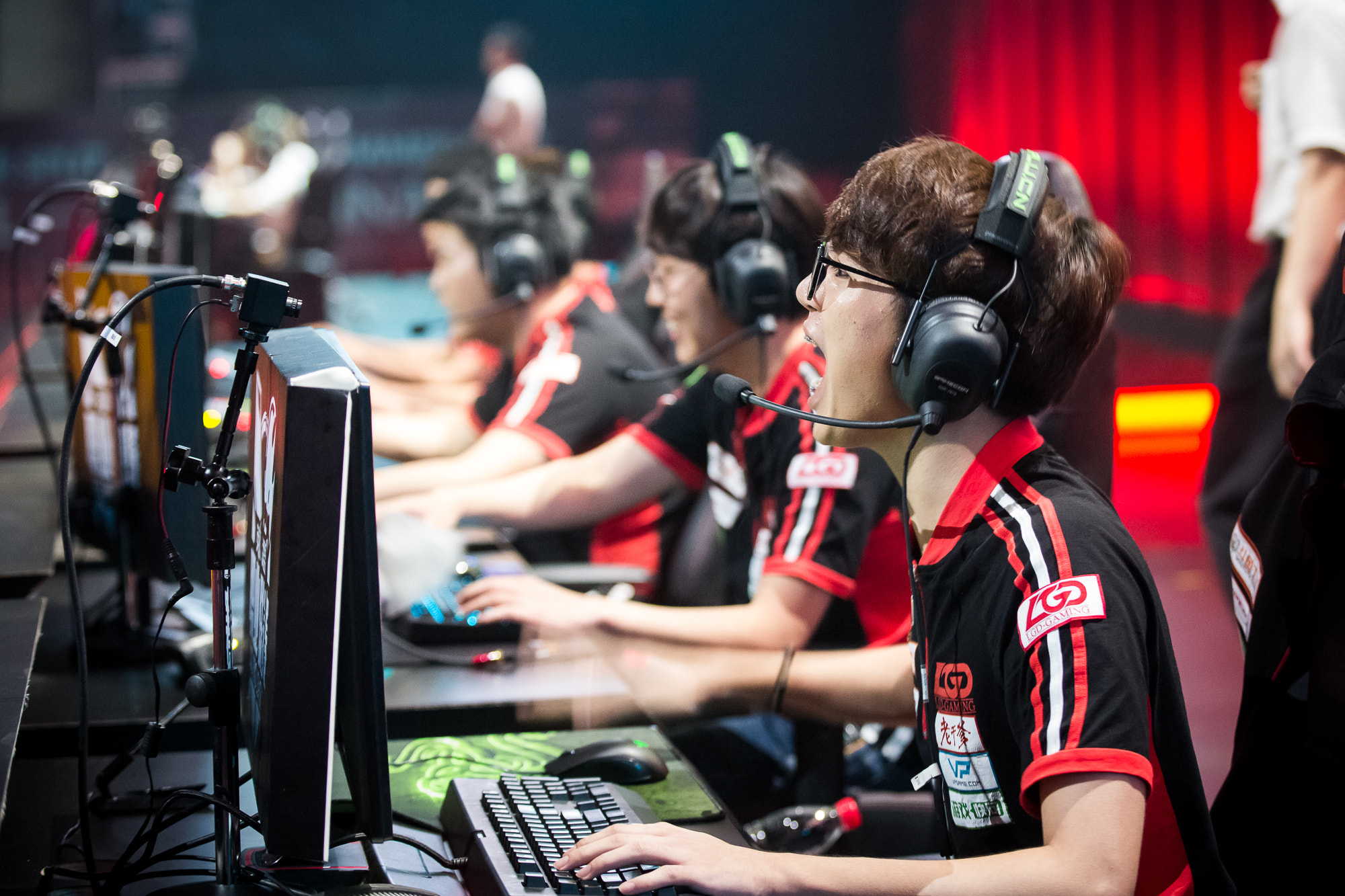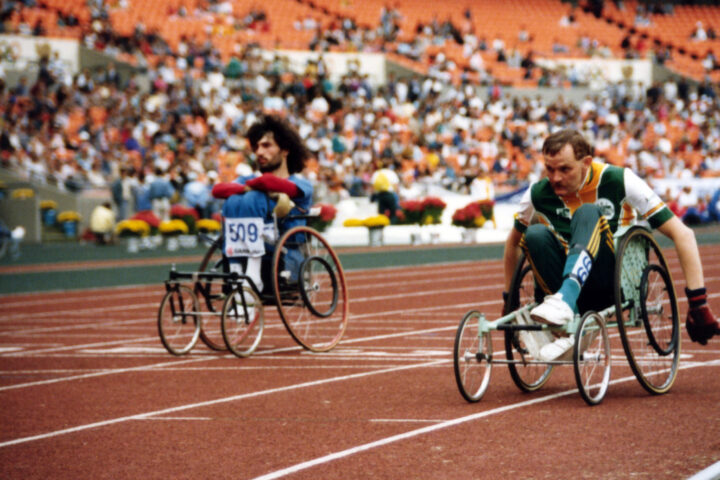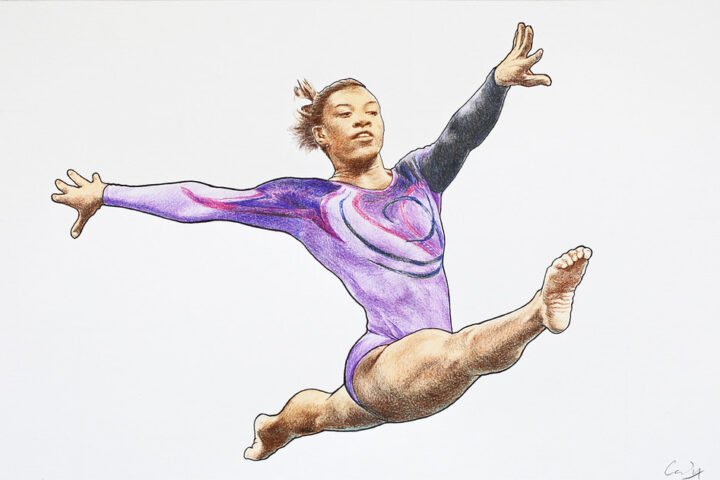Source: Wikimedia_LGD_Gaming_at_the_2015_LPL_Summer_Finals_By Bruce Liu – Imported from 500px (archived version) by the Archive Team. (detail page), CC BY-SA 3.0
The video gaming industry has reached an all-time high in the last few years. The global revenue for this industry was estimated to be almost 347 billion US dollars in the year 2022. The mobile gaming market alone generated about 248 billion US dollars from this global amount.
Companies like Nintendo, Sony, and Microsoft- also called the Big 3 in the video gaming industry- are big players in the market and are the creators of some of the best games out there right now. The profit these companies accumulate is proof that e-sports aren’t going anywhere anytime soon.
What are E-Sports?
This is an important question we should answer before starting the discussion, yeah?
E-sports, or electronic sports, are video games which are played in an organized environment. Simply put, this means that there are teams or individuals who compete with each other in a controlled, organized manner by playing video games. Video games were already quite popular but the gaming population skyrocketed when streaming platforms like YouTube and Twitch were released. This led to this branch of sports becoming a household name in the video gaming industry.
There are two types of game developers in the market currently. There are the ‘hands on’ developers who create games and also organize tournaments regularly. And there are the ‘hands off’ developers who create games but don’t hold any such events.
Players like Ronaldo and Messi have large fanbases all over the world. Today almost every other person knows who they are. But soon e-sports players like Lee ‘Faker’ Sang-hyeok and Kim “Doinb” Tae-sang will also cater to such fame and popularity.
Their history
We celebrate the anniversary of the first ever video game tournament on October 19 every year. It’s been quite a long time since ‘Spacewar!’ was organized and developed by Steve Russell with the help of five of his colleagues at MIT on October 19, 1972. This game became the field of competition.
This marked the very beginning of the e-sports revolution after which there was slow but steady progress. Soon, the internet was invented and internet games were also created. The first commercial online game created was ‘Islands of Kesmai’ which debuted in 1984. After this, several other games were also introduced but another breakthrough was achieved way later in 1991.
Up until then, the players had access to their high scores to see how they were performing in the game. It was in 1991 when Street Fighter II made its debut and allowed players to challenge and fight other players ‘face-to-face’. This paved the way for future multiplayer modes in games. The 1990s also saw the emergence of many gaming tournaments organized video game company, Nintendo. These were held in the US and had competitors from countries like Chile, Australia, and the UK participating.
These were, however, times when there were no set rules on E-Sports. The South Koreans were the ones who recognized that some supervision was required and they created the KeSPA (Korean Esport Association) in 2000. This was observed after the country decided to improve their internet and communication infrastructure as a way of combating the financial crisis ongoing back then. This body was created with the aim to make and regulate rules for competing in such games on a national level. It soon become the inspiration for other countries who also established their own versions of KeSPA.
The UK soon made such a body in 2014 and China followed soon after. The first real E-sports were StarCraft (1998), StarCraft (2010), and Defense of the Ancients 2 (DOTA 2) (2013). All three of these were blockbusters and quickly gained momentum. The DOTA 2 international held in 2019 had a prize pool of 13.5 billion US dollars which is even more than some traditional games like golf!
Its impact
Concerns
The advent of E-Sports has raised social, medical, and ethical issues concerned with the impact these games will have on the players, the organizers, and the audience.
In order to compete in video games, players have to practice regularly and their training schedules differ according to their playing levels. Professional players complete some 30.9 hours of total game-specific and 19.6 hours of competitive practice per week. Semi-professional players have 24.7 hours of total game-specific and 15.0 hours of competitive practice. Such long hours have been a topic of worry amongst guardians and onlookers. One of the biggest medical condition players suffer from is back pain and 42% of esports players in college experience either neck or back pain. Other major medicinal concerns include risk of cardiovascular diseases, eye fatigue, headaches, and in some cases, psychological strain as well.
Ethical and social concerns revolve around the players’ rights. In 2014, a south Korean team attempted suicide after they had been found fixing matches beforehand. This raised serious concerns over how the players are treated. Another report talked about players suffering from burnouts because of intensive practice schedules which went on for as long as 16 hours. Many incidents also included the use of performance-enhancing drugs, gambling in games, game cancellations, cult-like obsessions, and issues over the age limit.
The positives
Although not at the level of traditional sports, E-sports can also have some positives when it comes to a player’s health. These are not good substitutes for traditional sports when it comes to the cardiovascular issues we talked about earlier, but offer some benefits if the playing routines are managed properly. These sports are found to improve reflexes and hand-eye coordination in players. Some games also help in developing awareness, attention, and memory as well.
Other than this, playing E-sports enhances a sense of comradeship and friendship across borders- this was highlighted during the COVID pandemic when people could play video games to interact with friends.
Like everything else in this world, E-Sports have their pros and cons. It is up to the users to manage and play properly.
Resources
- Topic: Video game industry. (2023). Statista; Statista. https://www.statista.com/topics/868/video-games/
- Leroux-Parra, M. (2020, April 24). Esports Part 1: What are Esports? Harvard International Review; Harvard International Review. https://hir.harvard.edu/esports-part-1-what-are-esports/
- Good, O. (2012, October 19). Today is the 40th Anniversary of the World’s First Known Video Gaming Tournament. Kotaku; Kotaku. https://kotaku.com/today-is-the-40th-anniversary-of-the-worlds-first-known-5953371
- EGM Feature:The 5 Most Influential Japanese GamesDay Four: Street Fighter II. (2011, November 3). EGMNOW.com. https://web.archive.org/web/20170314064721/http://www.egmnow.com/articles/news/egm-featurethe-5-most-influential-japanese-gamesday-four-street-fighter-ii/
- Leroux-Parra, M. (2020, April 24). Esports Part 2: The Evolving Rules of Esports. Harvard International Review; Harvard International Review. https://hir.harvard.edu/esports-part-2
- Pluss, Matthew A.; Novak, Andrew R.; Bennett, Kyle J. M.; McBride, Ignatius; Panchuk, Derek; Coutts, Aaron J.; Fransen, Job (1 December 2022). “Examining the game-specific practice behaviors of professional and semi-professional esports players: A 52-week longitudinal study”. Computers in Human Behavior. 137: 107421. doi:10.1016/j.chb.2022.107421.
- Migliore, Lindsey; McGee, Caitlin (2021), Migliore, Lindsey; McGee, Caitlin; Moore, Melita N. (eds.), “Neck and Back Disorders in Esports”, Handbook of Esports Medicine: Clinical Aspects of Competitive Video Gaming, Cham: Springer International Publishing, pp. 71–118, doi:10.1007/978-3-030-73610-1_3, ISBN 978-3-030-73610-1, S2CID 236650862, retrieved 25 February 2023
- Leroux-Parra, M. (2020, April 24). Esports Part 2: The Evolving Rules of Esports. Harvard International Review; Harvard International Review. https://hir.harvard.edu/esports-part-2/
- Patterson, Richard; McNamara, Eoin; Tainio, Marko; de Sá, Thiago Hérick; Smith, Andrea D.; Sharp, Stephen J.; Edwards, Phil; Woodcock, James; Brage, Søren; Wijndaele, Katrien (September 2018). “Sedentary behaviour and risk of all-cause, cardiovascular and cancer mortality, and incident type 2 diabetes: a systematic review and dose response meta-analysis”. European Journal of Epidemiology. 33 (9): 811–829. doi:10.1007/s10654-018-0380-1
- Good, O. S. (2014, March 18). Top Korean League of Legends player fixed matches before attempting suicide, says eSports league. Polygon; Polygon. https://www.polygon.com/2014/3/18/5522192/korean-league-of-legends-player-fixed-matches-suicide
- Venero, B. (2020, February 6). Council Post: Why The Rise Of Esports Is Good For Schools, Students And Even Employers. Forbes. https://www.forbes.com/sites/forbestechcouncil/2020/02/06/why-the-rise-of-esports-is-good-for-schools-students-and-even-employers/
Seffah, K. D., Salib, K., Dardari, L., Taha, M., Purva Dahat, Toriola, S., Satnarine, T., Zareen Zohara, Ademiniyi Adelekun, Ahmed, A., Sai Dheeraj Gutlapalli, Patel, D., & Khan, S. (2023). Health Benefits of Esports: A Systematic Review Comparing the Cardiovascular and Mental Health Impacts of Esports. Curēus. https://doi.org/10.7759/cureus.40705

















